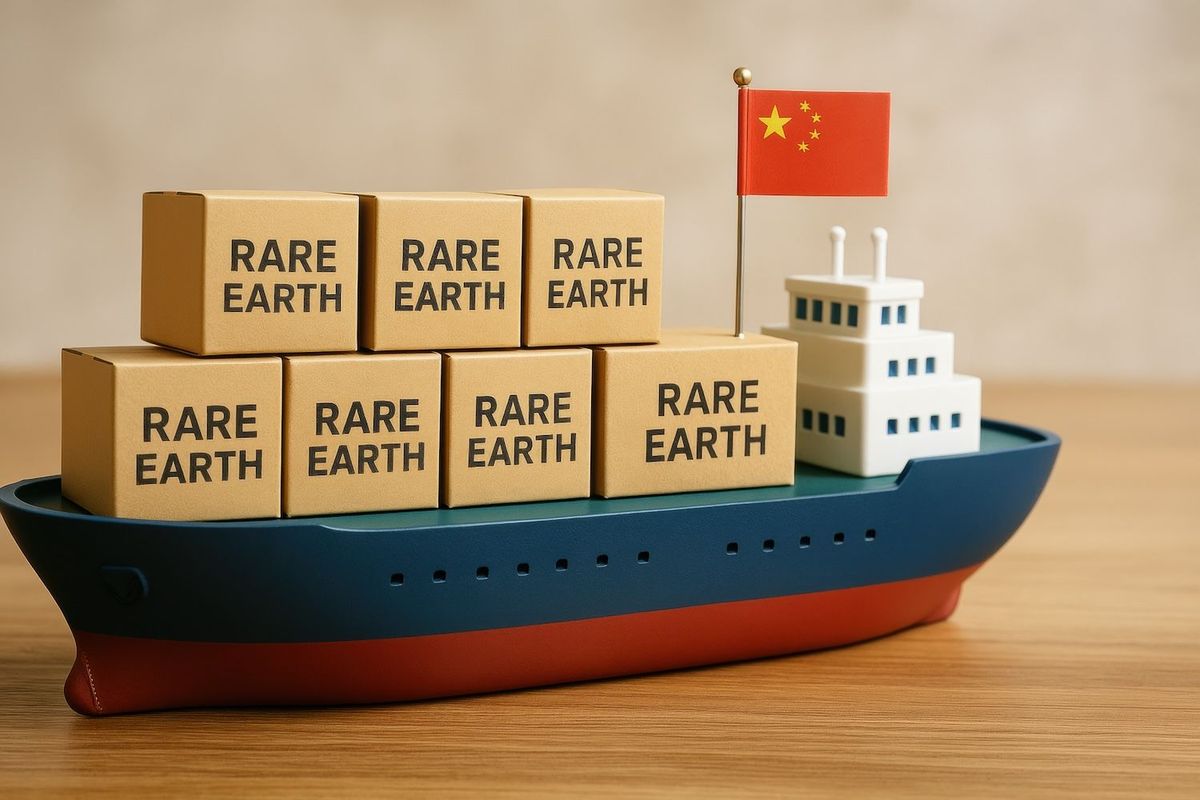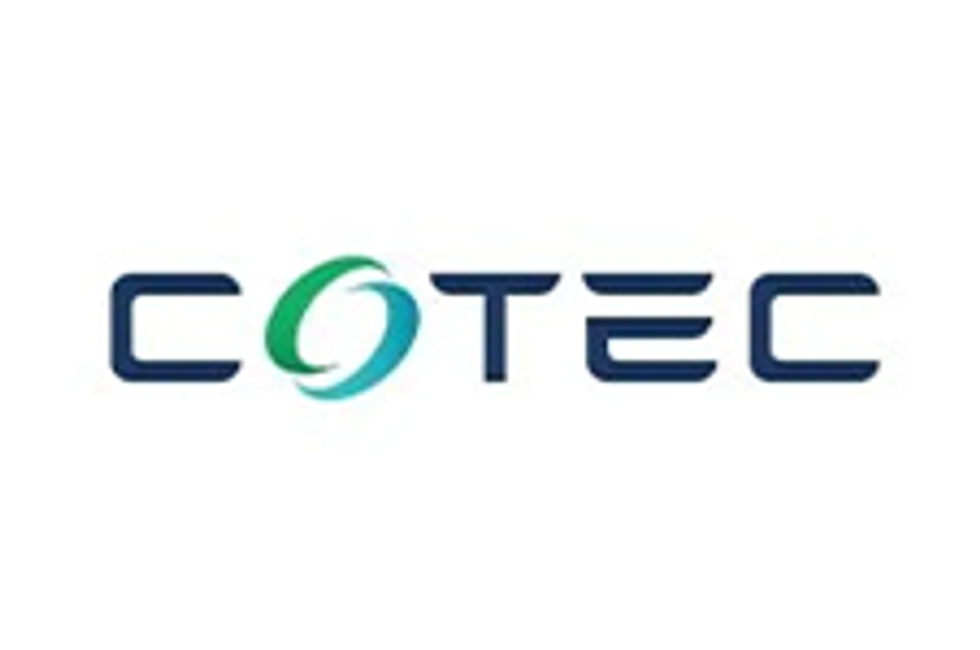Rare Earths Market Update: H1 2025 in Review
The rare earths market was impacted by geopolitical tensions, Chinese production dominance and Trump's tariff threats during the first half of 2025. Find out what factors could move the market in H2.

Supported by growing permanent magnet demand, the rare earths market started 2025 on an uptrend.
Concerns about supply chain stability quickly began to impact the sector as US-China trade tensions increased early in the year. Throughout Q1, tariff uncertainty and concerns about tighter Chinese controls were on the rise.
As the year unfolded, supply chain growth became a key focus for the US, boosting US-focused stocks.
In early April, China flexed its grip on the rare earths market with Announcement 18, a sweeping export control measure from the Ministry of Commerce and General Administration of Customs.
The policy, which the Asian nation framed as a national security and nonproliferation safeguard, requires exporters to obtain licenses for a slate of medium and heavy rare earths — including samarium, gadolinium, terbium, dysprosium, lutetium, scandium and yttrium — along with their oxides, alloys and compounds.
The export of permanent magnet and rare earth technologies face similar safeguards under the measure.
The move added a fresh layer of regulatory complexity for global supply chains reliant on these critical materials for high-performance magnets, electronics, defense, clean energy and advanced manufacturing.
Countering the new restrictions out of China, US President Donald Trump issued an executive order to examine the security of America's critical minerals supply chain, with a focus on rare earths.
“President Trump recognizes that an overreliance on foreign critical minerals and their derivative products could jeopardize US defense capabilities, infrastructure development, and technological innovation,” as per the White House.
China eases rare earths export restrictions
By June, the global auto sector was feeling the pressure of China’s new restrictions.
“With a deeply intertwined global supply chain, China’s export restrictions are already shutting down production in Europe’s supplier sector,” said Benjamin Krieger of the European Association of Automotive Suppliers (CLEPA).
“We urgently call on both the EU and Chinese authorities to engage in a constructive dialogue to ensure the licensing process is transparent, proportionate, and aligned with international norms,” added the secretary general.
Rare earths are used in both electric and internal combustion engine vehicles, and CLEPA went on to warn of more auto sector shutdowns if the situation was not rectified.
To quell growing anxieties around supply security in the auto industry, trade discussions between Chinese Minister of Commerce Wang Wentao and EU Trade Commissioner Maroš Šefčovič were held in Paris.
The meeting resulted in China introducing a “green channel” to speed up export licenses for rare earths; the concession will particularly benefit select EU firms. Export licenses were also granted to rare earths suppliers serving major US auto players like General Motors (NYSE:GM), Ford Motor (NASDAQ:F) and Stellantis (NYSE:STLA).
US lasers in on rare earths supply
China has long controlled the vast majority of the rare earths market, overseeing 69 percent of annual mine production, 85 percent of refining and processing capacity and 90 percent of magnet manufacturing.
As the US hones in on supply chain security, it has amped up its support of a domestic rare earths supply chain through investment in mining companies and permit streamlining.
The most notable recent move is US$400 million in funding from the Department of Defense for MP Materials (NYSE:MP), the operator of California-based Mountain Pass, the country’s only rare earths mine.
The investment, announced in July, will fund the expansion of MP’s processing capabilities at the Mountain Pass site and will support the construction of a second magnet manufacturing facility in the US. In return, the defense department will have a domestic source of permanent magnets for defense applications.
“Rare earth magnets are one of the most strategically important components in advanced technology systems spanning defense and commercial applications. Yet today, the US relies almost entirely on foreign sources,” said MP. “This strategic partnership builds on MP Materials’ operational foundation to catalyze domestic production, strengthen industrial resilience, and secure critical supply chains for high-growth industries and future dual use applications.”
A few days later, the public sector also showed support, with Apple (NASDAQ:AAPL) penning a US$500 million deal with MP to produce rare earth magnets in the US using 100 percent recycled materials.
Starting in 2027, MP will supply magnets for “hundreds of millions” of Apple devices, advancing the tech giant’s push for a sustainable domestic supply chain. In a press release at the time, Apple CEO Tim Cook called the partnership a step toward securing vital materials for advanced technology while bolstering US innovation.
Internationally, Lynas Rare Earths (ASX:LYC,OTC Pink:LYSDY) achieved a sector milestone in May by producing on-spec dysprosium oxide at its Malaysian facility, marking the first commercial heavy rare earths output outside China.
CEO Amanda Lacaze told investors that the development strengthens supply chain resilience, giving customers in Japan, the US and Europe an alternative source for critical materials, and positioning Lynas as the world’s only producer of separated heavy rare earths products beyond China’s borders.
These moves were applauded by industry watchers as concrete steps in reducing reliance on Chinese supply; however, the consensus is that there is still much work to be done.
Mid and downstream rare earths buildout
During a keynote presentation at this year's Rule Symposium, held in early July in Boca Raton, Florida, Nomi Prins, an economist, author and former Wall Street executive, described what she calls the “real asset uprising,” a global shift in value and power driven by hard assets like precious metals, energy and rare earths.
“The entire US defense system runs on China's processing of rare earths, and that is one of the reasons why there is a current (Section) 232 investigation into the importance of critical minerals, and particularly those 17 rare earths, because this is an issue you don't want, even in peacetime,” she said. “You're basically relying on China, another country, to define what you need to run your defense, also what you need to run the growing energy requirements."
Watch Prins discuss the real asset uprising, as well as the precious metals market.
Chris Berry of House Mountain Partners sees strategic investments in refining, processing and manufacturing as the most effective way to expand North American rare earths supply.
“Rare earths, in and of themselves, are not rare. What is rare is the separation and the processing capacity, and then secondarily is the magnet processing capacity,” Berry told the Investing News Network during an interview at Fastmarkets' Lithium Supply & Battery Raw Materials conference in June.
“If the US government was going to fund something in the magnet supply chain, I would argue it's either magnet process or magnet-building capacity, or, more importantly, rare earth separation capacity,” he added.
This would not only reduce US dependence on China for rare earth magnets — Berry also noted that getting refinement and processing facilities built is a much faster process than permitting mines.
“If we’re talking about building a mine, it could take 10 to 15 years — sometimes more, depending on the situation,” he said. “Refining capacity is different. From finding a site and securing permits to raising capital and building the facility, you could be looking at five years, maybe less, though it depends on the material — whether it’s rare earths, nickel or something else.” Berry argued that boosting refining capacity is key to reducing reliance on China.
“You strike deals with raw material producers — maybe they’re Canadian, Australian, Chilean or even from parts of Africa. The point is, refining gets you to a usable product much faster,” he explained.
“Ask a battery manufacturer what they can do with spodumene or raw nickel — the answer is not much. But give them battery-quality material and they can trial it and integrate it into their supply chain. It’s a much more realistic approach.”
Global collaboration only way to compete with China
While a concerted effort like Berry described is key to quickly building out and fortifying a North American supply chain, tariff tensions with many countries around the globe have hurt allyship with the US.
However, as Berry and Gracelin Baskaran, director of the Critical Minerals Security Program at the Center for Strategic and International Studies argue, the US can't do it alone.
“If countries continue to operate independently instead of collectively, China will retain its dominant position because no single nation has enough market leverage on its own,” Baskaran wrote in a June overview.
Raising the warning bells of an impending crisis, her report goes on to note:
“Prices for neodymium-praseodymium oxide — the principal rare earth component in neodymium-iron-boron magnets — have fallen below US$60 per kilogram. If prices stay below US$60 per kilogram through 2030, approximately half of the projected supply originating outside of China is expected to become economically unviable. In fact, at this price point, only eight rare earth projects beyond China are expected to break even on direct production costs.”
According to Baskaran, China’s use of export controls has heightened the urgency of building critical minerals supply chains with allied nations. However, she believes this won’t happen without market intervention.
While US tariffs on Chinese imports are one option, their impact would be limited — the US accounts for just 1.7 percent of rare earths consumption, along with similarly small shares of other key minerals.
Any price-shaping strategy would require coordination with major consuming nations such as Australia, Canada, Japan, South Korea, the UK and the EU.
Rare earths market bifurcation
According to an August report from Benchmark Source, China’s newly imposed export restrictions on heavy rare earth oxides have created a pronounced regional price split.
While domestic Chinese rare earths prices remain relatively stable, markets outside China are seeing significant surges, driven by increased demand for ex-China supply.
This divergence underscores how export controls can distort global price dynamics, propelling up costs where alternatives are scarce while leaving domestic markets largely shielded.
Light rare earths have also been pushed higher by the broad market tailwinds.
The rest of the year could see more upward momentum in light of China “quietly” issuing its first rare earths mining and smelting quotas of the year in July. “This low-key approach is part of China’s continued efforts to tightly control its rare earths supply chain,” the Benchmark report explains. “It is likely that the impacts of this quota will further contribute to a bullish market sentiment over the next few months.”
Don’t forget to follow us @INN_Resource for real-time updates!
Securities Disclosure: I, Georgia Williams, hold no direct investment interest in any company mentioned in this article.
Editorial Disclosure: The Investing News Network does not guarantee the accuracy or thoroughness of the information reported in the interviews it conducts. The opinions expressed in these interviews do not reflect the opinions of the Investing News Network and do not constitute investment advice. All readers are encouraged to perform their own due diligence.
- How to Invest in Rare Earth Metals ›
- Rare Earths Stocks: 9 Biggest Companies in 2025 ›
- Top 10 Countries for Rare Earth Metal Production ›
- Rare Earth Reserves: Top 8 Countries ›



